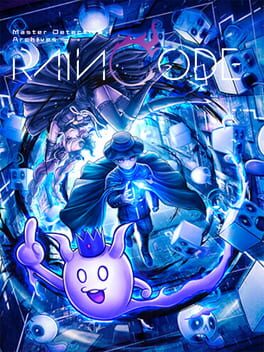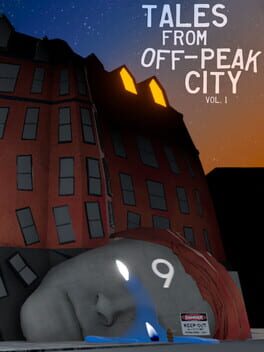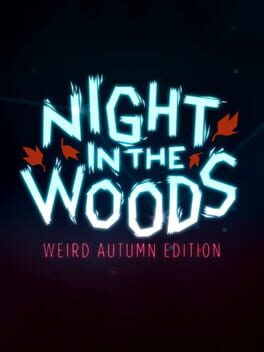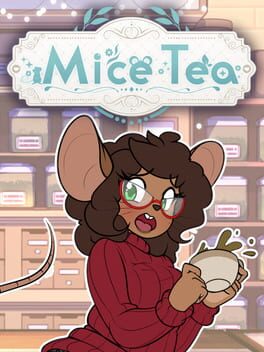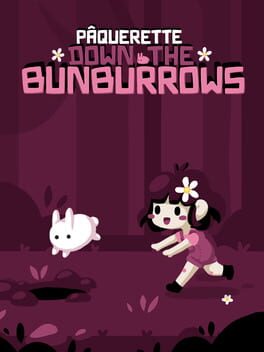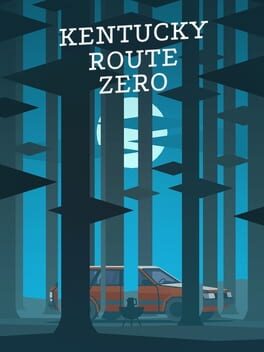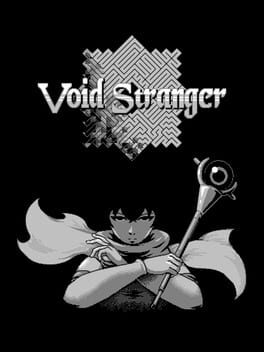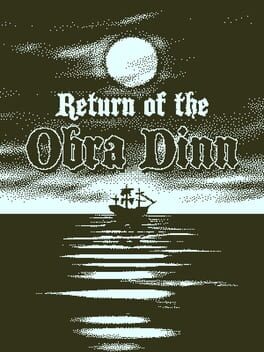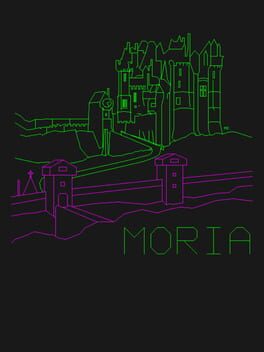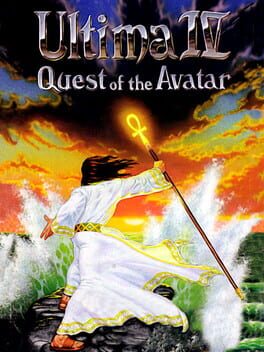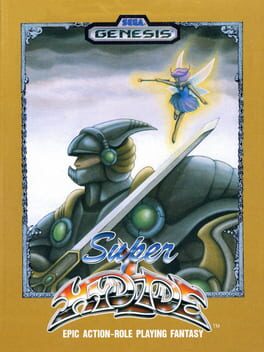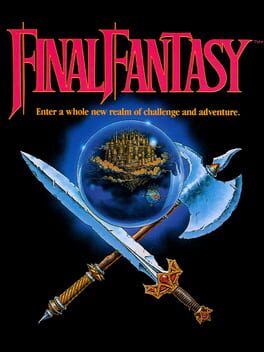lukebee
14 reviews liked by lukebee
I really loved all the characters and thought the mysteries were mostly fine, with the standout being the very first one. I thought that was such a ballsy opening to a game. They really tricked me! Also, I love that whenever Yuma is stuck in a pickle the answer to “how’s he gonna get out of this one?!?” is “a cool they/them is about to kick everyone’s ass.”
Just like Off-Peak before it, I'm so impressed by how much this game pulls art into the experience of playing the game. It confronts the player directly and unavoidably with the fact that all the architecture in the game, all the models and paintings, were made by a person with artistic intent. This is of course the case in all games, but Cosmo D's games foreground that fact, and they always leave me with a deeper appreciation of the latent art in other games when I play them afterwards.
This also has a pretty strong story, short and sweet but still filled with twists, turns, and shocking reveals. Because of this, it holds together as a singular work a bit more than Off-Peak does. This definitely makes me want to finish out the series, and explore the creator's other works as well.
This also has a pretty strong story, short and sweet but still filled with twists, turns, and shocking reveals. Because of this, it holds together as a singular work a bit more than Off-Peak does. This definitely makes me want to finish out the series, and explore the creator's other works as well.
Night in the Woods is a lot to unpack. The story of its creation, of the people who got together to develop it, is a fairly tragic line of inquiry nowadays; a story of passion for creation, sure, but also of abuse, and death, and sickness.
A direct result of the tragedy of its makers is that we will, more than likely, never get a game like it again - Revenant Hill having been cancelled due to Scott Benson's health issues. And while that's a shame, it also makes the fact Night in the Woods happened all the more special. I wish The Glory Society's members only the best.
This game speaks in an intensely true way to the struggles and the soul of the younger generations' early adulthood in this current-day world. In 2017 as beyond, when Weird Autumn Edition finally finished parts of the game that lay incomplete before, the game got at a potent anxiety and its core in my life.
Not only did Mae strongly mirror my struggles with mental health, she also reminded me of how hard I'd fought to fit into society, not succeeding; how, in that situation, some turn to befriend, uphold and be upheld by other outcasts, while others cling to family, and others again slip down a slippery slope and descend into an ideological muck. Seeing people as things; seeing people as shapes. It's a headspace Mae is saved from by her friends, and circumstance - as I was, when it almost happened.
I can't hide what I know is true: Night in the Woods, alongside my studies of history and 1900s European literature, made me an anti-capitalist, and antifascist. I wouldn't be who I am without it; I wouldn't make what I make without it. Its villains are a harrowing portrait of self-interested intentions burning squarely in a hell of their own paving; of the brainrot that is killing the United States and many other places.
It's not a perfect game in its pacing or some of its thematic glue, but ultimately, playing this is very worth it. It's a game that understands, gets it in a way very few other things have since.
A direct result of the tragedy of its makers is that we will, more than likely, never get a game like it again - Revenant Hill having been cancelled due to Scott Benson's health issues. And while that's a shame, it also makes the fact Night in the Woods happened all the more special. I wish The Glory Society's members only the best.
This game speaks in an intensely true way to the struggles and the soul of the younger generations' early adulthood in this current-day world. In 2017 as beyond, when Weird Autumn Edition finally finished parts of the game that lay incomplete before, the game got at a potent anxiety and its core in my life.
Not only did Mae strongly mirror my struggles with mental health, she also reminded me of how hard I'd fought to fit into society, not succeeding; how, in that situation, some turn to befriend, uphold and be upheld by other outcasts, while others cling to family, and others again slip down a slippery slope and descend into an ideological muck. Seeing people as things; seeing people as shapes. It's a headspace Mae is saved from by her friends, and circumstance - as I was, when it almost happened.
I can't hide what I know is true: Night in the Woods, alongside my studies of history and 1900s European literature, made me an anti-capitalist, and antifascist. I wouldn't be who I am without it; I wouldn't make what I make without it. Its villains are a harrowing portrait of self-interested intentions burning squarely in a hell of their own paving; of the brainrot that is killing the United States and many other places.
It's not a perfect game in its pacing or some of its thematic glue, but ultimately, playing this is very worth it. It's a game that understands, gets it in a way very few other things have since.
Mice Tea
2023
Mice Tea’s Felicia route (hereafter referred to as Felicia with italics) is fascinating to me as a work that is explicitly a fandom object about a community that is usually not considered a fandom as much as a literary genre or community of insular artists. The furry community is a fandom, yes, and I think it’s why this lasers into the communal aspects of TGTF (the chosen acronym for gender-bender transformation kink porn, hereafter referred to by said acronym) as well, but it clearly is conversing with the community in ways that Gender Bender DNA Twister Extreme, Student Transfer, and Max’s Big Bust, other notable community efforts, don’t.
Those works, while enjoyable (even if two out of the three are completely impossible to find sexy despite being kink fiction), are very much straightforwardly... fiction with a gender-bender theme. Felicia is about the relationships that people have with gender-bending as a concept, how fiction about it affects them, and using kink as a tool for liberating self-expression. It’s got unobtrusive-but-witheringly-deep cuts to old figures (I am pretty sure that there’s a fucking Sparkling Generation Valkyrie Yuuki reference in one random NPC’s attire) and tempers it with newer approaches.
While Felicia’s explicit sex positivity is extremely cool and worth highlighting and shouting out as a hallmark of more “modern” TGTF, it being a centrally trans narrative instead of a trans-fetishizing narrative is the dead giveaway. The narrative thrust is different, heterosexuality is not compulsory, and it centers on a wlw romance that genuinely focuses on fluffy, cuddly intimacy and not just sex (even if there’s a lot of fucking and most of it has way above-par anatomy and prose for this genre). It’s not deep or even particularly sharp with its character beats, but it’s refreshing, smutty, and enjoyable nonetheless.
This genuine character arc elides my biggest issue with Ms. Transformistress’ pieces outside of this game, which are all coming from a similar intent of genuine trans catharsis, but are hamstrung by their short-form nature. The ethics of this fetish are always murky, but when there’s insufficient setup for establishing the character as “oh they’re actually trans and just don’t know it yet and this non-consensual change is actually exactly what they want” without essentially being a post-hoc retcon it feels tacky. Here, while Felicia is still ultimately that exact plot beat, the drawn-out narrative nature allows it to actually feel earned. The foreshadowing beats, while not exactly subtle, feel real. And despite all this, Felicia succeeds at only feeling preachy when the main character is, in-universe, demonstrating to a male-identifying person how to properly eat pussy. And, like, that’s a public service. The rest of the time, it maintains its fluffy, laid-back, relaxed atmosphere with ease.
The contrast between Felicia’s experiences and Gavin’s allows for genuinely incisive portrayals of dysphoria and euphoria, with Gavin’s hotel metaphor being a genuinely effective way to express emotions impossible for almost anybody to feel. There are portrayals of bigger things that change - people becoming more romantic, sexualities shifting, but equally important are the little beats. One person becomes clumsier and has to exert effort into making themselves present while they want, while the other dances around environments and situations they fumbled through before. The unspoken pressure of dysphoria on their executive function is essentially what causes the entire game to happen.
Gavin is an older-school TGTF protagonist, in a characterization that evokes early-middle Tedd from El Goonish Shive. A tinkerer and researcher, he instigates the transformations and has an interest in the act itself. He considers himself a man no matter what, and even when he has a vagina and breasts he is treated as and written as a man with he/him pronouns. His sex scene in the route is essentially femdom, despite everybody having female bodies, and he then switches bweteen to male and female bodies afterwards. Felicia, by contrast, is is treated as a woman by everybody within the narrative and her gender transformation is early in, more-restrained than Gavin’s, and her body never switches back to its AMAB presentation.
The route has four different side characters who each get a chance to transform, and they each relate differently - one takes to Gavin’s interest in the mechanics and act of transforming, instead being a middle-late Tedd who adopts more genderfluid self-perception (while still smuggling it out of the cities to help trans homies in the sticks), another takes after Felicia and is an explicitly trans blushing mess, one is entirely disinterested in gender presentation and essentially chooses a form out of tool-like interest (notably, this character is a real-life OC that appears in all goddamn sorts of kink stuff I’ve run into, and has few compunctions about scenarios) and one is completely unchanged by the transformation because to her it’s just a way of reinforcing their love of an animal.
These topics aren’t brought up as serious roadblocks to be pondered, they’re touchstones used to establish resonance for the explicitly queer audience it courts. There’s something to the act of transforming and its consequences that grabs somebody and turns them on, and even if it’s just effectively the result of some crossed mental wires, it’s still going to grab each person in different ways. I’ve been a lurker in the TGTF community since before I was in puberty, back when I didn’t have any other frame of reference for how somebody could metamorphose into a form that is, for all intents and purposes, far better for them and way hotter. I infrequently contribute to it, even now, under an array of pen names, alt accounts, and anonymous submissions that are, vaguely, traceable to a central internet personality that refuses to decompartmentalize herself. It’s one of the few places that, even as an unremarkable and forgotten bystander, truly feels like a home to her. This is one of the few works that gets it.
Those works, while enjoyable (even if two out of the three are completely impossible to find sexy despite being kink fiction), are very much straightforwardly... fiction with a gender-bender theme. Felicia is about the relationships that people have with gender-bending as a concept, how fiction about it affects them, and using kink as a tool for liberating self-expression. It’s got unobtrusive-but-witheringly-deep cuts to old figures (I am pretty sure that there’s a fucking Sparkling Generation Valkyrie Yuuki reference in one random NPC’s attire) and tempers it with newer approaches.
While Felicia’s explicit sex positivity is extremely cool and worth highlighting and shouting out as a hallmark of more “modern” TGTF, it being a centrally trans narrative instead of a trans-fetishizing narrative is the dead giveaway. The narrative thrust is different, heterosexuality is not compulsory, and it centers on a wlw romance that genuinely focuses on fluffy, cuddly intimacy and not just sex (even if there’s a lot of fucking and most of it has way above-par anatomy and prose for this genre). It’s not deep or even particularly sharp with its character beats, but it’s refreshing, smutty, and enjoyable nonetheless.
This genuine character arc elides my biggest issue with Ms. Transformistress’ pieces outside of this game, which are all coming from a similar intent of genuine trans catharsis, but are hamstrung by their short-form nature. The ethics of this fetish are always murky, but when there’s insufficient setup for establishing the character as “oh they’re actually trans and just don’t know it yet and this non-consensual change is actually exactly what they want” without essentially being a post-hoc retcon it feels tacky. Here, while Felicia is still ultimately that exact plot beat, the drawn-out narrative nature allows it to actually feel earned. The foreshadowing beats, while not exactly subtle, feel real. And despite all this, Felicia succeeds at only feeling preachy when the main character is, in-universe, demonstrating to a male-identifying person how to properly eat pussy. And, like, that’s a public service. The rest of the time, it maintains its fluffy, laid-back, relaxed atmosphere with ease.
The contrast between Felicia’s experiences and Gavin’s allows for genuinely incisive portrayals of dysphoria and euphoria, with Gavin’s hotel metaphor being a genuinely effective way to express emotions impossible for almost anybody to feel. There are portrayals of bigger things that change - people becoming more romantic, sexualities shifting, but equally important are the little beats. One person becomes clumsier and has to exert effort into making themselves present while they want, while the other dances around environments and situations they fumbled through before. The unspoken pressure of dysphoria on their executive function is essentially what causes the entire game to happen.
Gavin is an older-school TGTF protagonist, in a characterization that evokes early-middle Tedd from El Goonish Shive. A tinkerer and researcher, he instigates the transformations and has an interest in the act itself. He considers himself a man no matter what, and even when he has a vagina and breasts he is treated as and written as a man with he/him pronouns. His sex scene in the route is essentially femdom, despite everybody having female bodies, and he then switches bweteen to male and female bodies afterwards. Felicia, by contrast, is is treated as a woman by everybody within the narrative and her gender transformation is early in, more-restrained than Gavin’s, and her body never switches back to its AMAB presentation.
The route has four different side characters who each get a chance to transform, and they each relate differently - one takes to Gavin’s interest in the mechanics and act of transforming, instead being a middle-late Tedd who adopts more genderfluid self-perception (while still smuggling it out of the cities to help trans homies in the sticks), another takes after Felicia and is an explicitly trans blushing mess, one is entirely disinterested in gender presentation and essentially chooses a form out of tool-like interest (notably, this character is a real-life OC that appears in all goddamn sorts of kink stuff I’ve run into, and has few compunctions about scenarios) and one is completely unchanged by the transformation because to her it’s just a way of reinforcing their love of an animal.
These topics aren’t brought up as serious roadblocks to be pondered, they’re touchstones used to establish resonance for the explicitly queer audience it courts. There’s something to the act of transforming and its consequences that grabs somebody and turns them on, and even if it’s just effectively the result of some crossed mental wires, it’s still going to grab each person in different ways. I’ve been a lurker in the TGTF community since before I was in puberty, back when I didn’t have any other frame of reference for how somebody could metamorphose into a form that is, for all intents and purposes, far better for them and way hotter. I infrequently contribute to it, even now, under an array of pen names, alt accounts, and anonymous submissions that are, vaguely, traceable to a central internet personality that refuses to decompartmentalize herself. It’s one of the few places that, even as an unremarkable and forgotten bystander, truly feels like a home to her. This is one of the few works that gets it.
This first official release from Bunstack makes a big statement using a deceptively small package! What starts as a cute little sokoban puzzler about catching bunnies quickly unravels into a surreal, labyrinthian delve into the bizarre lore of the bunburrows in this excellent retro-style brain teaser.
You play as the charming Pâquerette, a rabbit enthusiast accompanied by her aloof friend Ophéline, who wants to catch rabbits! Thus you dive into the burrows and start cornering the buns. Each rabbit follows a simple set of logic when running from you, trying to move in the priority order of away > left > right. From this simple principle the puzzles can be logically deduced, albeit compounded by the tricky level design, winding tunnels the buns can use as shortcuts, and special tools that add a variety of new factors to play with.
The puzzles themselves are very well designed with a steady incline of difficulty that keeps things fresh in every burrow. While I won't spoil anything specific you can rest assured that there is at least 5x more content than at first appears, revealing itself only once you begin experimenting and gradually uncover the secrets of both bun interactions and their burrow. While some secrets may not intuitive, experimentation and perseverance will usually help you find your way (and of course the bustlingly friendly discord group are happy to hint).
This gives the game surprise after surprise after surprise as you naturally begin to realise how x mechanic could have been used earlier, and thus a whole new line of thinking unravels. The inventiveness on display here with secrets within secrets is a genuine treat and serves as a textbook example of what well executed knowledge gates can add to a play experience.
All this presented in beautiful Commodore-style blocky graphics and a top tier chip tune soundtrack by Herbie Puppy. If you enjoy puzzlers this one is well worth picking up, and if all that didn't convince you the low price definitely will!
You play as the charming Pâquerette, a rabbit enthusiast accompanied by her aloof friend Ophéline, who wants to catch rabbits! Thus you dive into the burrows and start cornering the buns. Each rabbit follows a simple set of logic when running from you, trying to move in the priority order of away > left > right. From this simple principle the puzzles can be logically deduced, albeit compounded by the tricky level design, winding tunnels the buns can use as shortcuts, and special tools that add a variety of new factors to play with.
The puzzles themselves are very well designed with a steady incline of difficulty that keeps things fresh in every burrow. While I won't spoil anything specific you can rest assured that there is at least 5x more content than at first appears, revealing itself only once you begin experimenting and gradually uncover the secrets of both bun interactions and their burrow. While some secrets may not intuitive, experimentation and perseverance will usually help you find your way (and of course the bustlingly friendly discord group are happy to hint).
This gives the game surprise after surprise after surprise as you naturally begin to realise how x mechanic could have been used earlier, and thus a whole new line of thinking unravels. The inventiveness on display here with secrets within secrets is a genuine treat and serves as a textbook example of what well executed knowledge gates can add to a play experience.
All this presented in beautiful Commodore-style blocky graphics and a top tier chip tune soundtrack by Herbie Puppy. If you enjoy puzzlers this one is well worth picking up, and if all that didn't convince you the low price definitely will!
Kentucky Route Zero
2013
“An American tragedy. An odyssey of debt, of grief, of broken promises, of hope. A painful, melancholic fable composed of fables and more fables, spreading out and weaving in and out of itself. A dream ebbing back and forth between memory and fantasy. A plea for you to care about something.”
...This was my original review for Kentucky Route Zero. I still think it’s a good description. But on consideration, I feel as though I need to be bold and say it: Kentucky Route Zero is not only one of my favorite games, but one of my favorite things ever made.
This is not an assessment of quality. I am not telling you what to feel. I am telling you how I feel. And Kentucky Route Zero makes me feel a way.
I specifically say “Favorite Thing”, because Kentucky Route Zero doesn’t affect me like a game. When I think about many of my favorite games, I often think of them as games. They are full of mechanics, of challenges, of systems. That’s certainly not all games are, and games can be many things, but in the capacity that they affect me, enchant me, or fascinate me, it is often within this vague category of “game”. But Kentucky Route Zero is different. To call it “my favorite game” and leave it at that misses something. It’s certainly a game, but it doesn’t make me feel the way games usually make me feel. First and foremost, Kentucky Route Zero is a story. It’s unlike most. The main body of this story is a game, but it’s also a multimedia saga. There’s something quintessential permeating my experience of Kentucky Route Zero that transcends that category.
It is a hauntological melancholy. It conjures a world more like a memory than a reality. Kentucky Route Zero tells the story of people who seem familiar but you’ve never met, with jobs that were never really secure, in situations that could never happen, in a version of Kentucky that has never existed. Magical realism constructs a vision not of reality, but of memory, of a sensate fabric that you swear could have been but never was. Americana is a mythic entity made visible, standing in front of me within Kentucky Route Zero, and it’s on its last breaths.
It’s a hopeful story. That doesn’t mean it’s happy. The world around you is a wasteland. Everyone is dying. Everyone is suffering. Everything is weighed down by debt, pulled deep down into pools of darkness. To live is to work, work, and die. But there are other ways to live. There always have been. Should we move on? I think the answer is clear. But that doesn’t make the pain go away. We have to be willing to feel both grief and hope in the same breath.
All of its blemishes are dismissable. Fleeting problems with UI, incidentally clunky writing, weird mechanical tangents, overwhelming scope, these melt away when I take a moment to remember what Kentucky Route Zero is and feel the frisson travel up and down my skin. I'm trying to not be too longwinded here, but it's hard. I can't get into specifics. So I wax poetic instead. I could write thousands of words on every minute I spent with Kentucky Route Zero and still feel like I was forgetting to say something. It is a multitudinous masterpiece, refracting and reflecting endlessly, timelessly, quietly.
Kentucky Route Zero is one of my favorite things.
...This was my original review for Kentucky Route Zero. I still think it’s a good description. But on consideration, I feel as though I need to be bold and say it: Kentucky Route Zero is not only one of my favorite games, but one of my favorite things ever made.
This is not an assessment of quality. I am not telling you what to feel. I am telling you how I feel. And Kentucky Route Zero makes me feel a way.
I specifically say “Favorite Thing”, because Kentucky Route Zero doesn’t affect me like a game. When I think about many of my favorite games, I often think of them as games. They are full of mechanics, of challenges, of systems. That’s certainly not all games are, and games can be many things, but in the capacity that they affect me, enchant me, or fascinate me, it is often within this vague category of “game”. But Kentucky Route Zero is different. To call it “my favorite game” and leave it at that misses something. It’s certainly a game, but it doesn’t make me feel the way games usually make me feel. First and foremost, Kentucky Route Zero is a story. It’s unlike most. The main body of this story is a game, but it’s also a multimedia saga. There’s something quintessential permeating my experience of Kentucky Route Zero that transcends that category.
It is a hauntological melancholy. It conjures a world more like a memory than a reality. Kentucky Route Zero tells the story of people who seem familiar but you’ve never met, with jobs that were never really secure, in situations that could never happen, in a version of Kentucky that has never existed. Magical realism constructs a vision not of reality, but of memory, of a sensate fabric that you swear could have been but never was. Americana is a mythic entity made visible, standing in front of me within Kentucky Route Zero, and it’s on its last breaths.
It’s a hopeful story. That doesn’t mean it’s happy. The world around you is a wasteland. Everyone is dying. Everyone is suffering. Everything is weighed down by debt, pulled deep down into pools of darkness. To live is to work, work, and die. But there are other ways to live. There always have been. Should we move on? I think the answer is clear. But that doesn’t make the pain go away. We have to be willing to feel both grief and hope in the same breath.
All of its blemishes are dismissable. Fleeting problems with UI, incidentally clunky writing, weird mechanical tangents, overwhelming scope, these melt away when I take a moment to remember what Kentucky Route Zero is and feel the frisson travel up and down my skin. I'm trying to not be too longwinded here, but it's hard. I can't get into specifics. So I wax poetic instead. I could write thousands of words on every minute I spent with Kentucky Route Zero and still feel like I was forgetting to say something. It is a multitudinous masterpiece, refracting and reflecting endlessly, timelessly, quietly.
Kentucky Route Zero is one of my favorite things.
Void Stranger
2023
Playing this game is a process of gradually tuning your mind to its frequency like a radio station, learning the languages it speaks as well as the gaps in what it says, until it feels like your whole body is resonating in harmony with it. It's a constant dance between fascinations: as soon as your mind is wholly absorbed with the first-order tile puzzles, the game zooms out and gets you thinking about the world it takes place in. The moment you start to really dig into the lore, it crashes back in close and reminds you that it's really about the deeply personal love and loss of each of the characters. And to see more of those characters, of course, you must do more sokoban.
It's hard to talk in detail about the game without spoilers, but I'll say this: I filled four pages with notes about this game, spilling over into a spreadsheet, a screenshot folder, and a large collection of video recordings. The expertise with which its layered puzzles are assembled is extraordinary, hitting a perfect difficulty point where you feel like a genius for each solve but (almost) everything feels like it's using the same design language that you can become fluent with. It stands with Riven as one of the best puzzle games I've ever played.
But that's not even the thing I'll remember most about Void Stranger. What will stay with me long after I forget the trick to B213 or the best way to route bulls is the love the characters hold for one another and the fucked up beautiful lengths they'll go to enact it. In the end, the heart of the game is summed up in the words uttered by Eus's statue... which I'll let you discover for yourself.
It's hard to talk in detail about the game without spoilers, but I'll say this: I filled four pages with notes about this game, spilling over into a spreadsheet, a screenshot folder, and a large collection of video recordings. The expertise with which its layered puzzles are assembled is extraordinary, hitting a perfect difficulty point where you feel like a genius for each solve but (almost) everything feels like it's using the same design language that you can become fluent with. It stands with Riven as one of the best puzzle games I've ever played.
But that's not even the thing I'll remember most about Void Stranger. What will stay with me long after I forget the trick to B213 or the best way to route bulls is the love the characters hold for one another and the fucked up beautiful lengths they'll go to enact it. In the end, the heart of the game is summed up in the words uttered by Eus's statue... which I'll let you discover for yourself.
Pentiment
2022
Truly fantastic writing here. One of the most poignant narratives I've encounter in gaming, couched in beautiful pre-renaissance illustrations. The third act of Pentiment is such a stroke of genius, reframing the entire first two-thirds of the game both narratively and thematically. Cannot recommend highly enough.
This one's very memorable and special to me, but utterly for reasons outside of its storytelling and narrative design. As a writer, I tend to approach games in that way- Bear with me, I'll talk about things other than words in a bit.
Lucas Pope, I feel, does well with creating emerging stories through branching paths, heavily influenced by player action. In "Papers, Please", for example, it was extremely compelling to have little stories for all these people passing by your checkpoint, unfolding either on-screen or in your mind. After all, your decision of "APPROVING" or "DENYING" their visas was an incredibly meaningful one in the lives of these bit-characters! However,
even back then, dialogue-writing and scene-construction were not exactly Pope's forté, and there wasn't much meat to the characters' bones (partially because there were so many). That wasn't a huge problem when the micro-narratives the game created were so dependable.
"Return of the Obra Dinn" definitely does not play to the strengths as a storyteller that "Papers, Please" made apparent; it's a fairly linear game where player agency in the story is starkly reduced (considering that the game's story takes place in a past you interface with from the present through magical flashbacks). Obra Dinn is also divided into individual areas that, while variable in the exact sequence of the scenes within them, end up following each other in the same order every time.
By the way: Obra Dinn has an enormous cast, all of them named and uniquely designed - while continuing to underwrite each of them, worse even than the few consistent and familiar faces from "Papers, Please". It feels like you barely get to know anyone; the windows you see them through are so brief and so limiting. You have no agency in these people's lives because they're either already dead or otherwise gone. The game feels extremely dead because of that, to its detriment. In a game with a stronger horror-component, that feeling would've been compelling; here, it's kind of dull.
Then, there are some of Lucas Pope's historical and political beliefs that subtly seep into the writing and character designs; never becoming ghoulish, but never being particularly tasteful in its depictions of people from distinct cultures, nor of complex political circumstances drenched in blood (such as the East India Company); it attempts to ride a strange line of fantastic pulp and historical precision, where each side diminishes the other. (As an aside, I still struggle to forgive Pope for his toothless and dull examination of the "circle of revolution" in "The Republian Times". It's a jam game, I know, but c'mon.)
TL;DR:
Why does the game still stick with me. then?
The deduction mechanic in 3D-space was genuinely beautifully executed. On your first playthrough, there is so much to see and discover in these static scenes from the past; Obra Dinn absolutely is a game for people with a love for detail, and - guilty as charged, that'd be me! It's also very good at capturing a feeling; an era of computer games that's long-past, one that never played like Obra Dinn, but definitely felt like it.
Overall, I'd say it's a worthwhile thing to go into entirely unspoiled. It'll give your brain some good exercise for an evening or three, and despite its flaws (all that shit up there + the 1-bit style being maybe not ideal for a detective game), it really is a game you remember.
Lucas Pope, I feel, does well with creating emerging stories through branching paths, heavily influenced by player action. In "Papers, Please", for example, it was extremely compelling to have little stories for all these people passing by your checkpoint, unfolding either on-screen or in your mind. After all, your decision of "APPROVING" or "DENYING" their visas was an incredibly meaningful one in the lives of these bit-characters! However,
even back then, dialogue-writing and scene-construction were not exactly Pope's forté, and there wasn't much meat to the characters' bones (partially because there were so many). That wasn't a huge problem when the micro-narratives the game created were so dependable.
"Return of the Obra Dinn" definitely does not play to the strengths as a storyteller that "Papers, Please" made apparent; it's a fairly linear game where player agency in the story is starkly reduced (considering that the game's story takes place in a past you interface with from the present through magical flashbacks). Obra Dinn is also divided into individual areas that, while variable in the exact sequence of the scenes within them, end up following each other in the same order every time.
By the way: Obra Dinn has an enormous cast, all of them named and uniquely designed - while continuing to underwrite each of them, worse even than the few consistent and familiar faces from "Papers, Please". It feels like you barely get to know anyone; the windows you see them through are so brief and so limiting. You have no agency in these people's lives because they're either already dead or otherwise gone. The game feels extremely dead because of that, to its detriment. In a game with a stronger horror-component, that feeling would've been compelling; here, it's kind of dull.
Then, there are some of Lucas Pope's historical and political beliefs that subtly seep into the writing and character designs; never becoming ghoulish, but never being particularly tasteful in its depictions of people from distinct cultures, nor of complex political circumstances drenched in blood (such as the East India Company); it attempts to ride a strange line of fantastic pulp and historical precision, where each side diminishes the other. (As an aside, I still struggle to forgive Pope for his toothless and dull examination of the "circle of revolution" in "The Republian Times". It's a jam game, I know, but c'mon.)
TL;DR:
Why does the game still stick with me. then?
The deduction mechanic in 3D-space was genuinely beautifully executed. On your first playthrough, there is so much to see and discover in these static scenes from the past; Obra Dinn absolutely is a game for people with a love for detail, and - guilty as charged, that'd be me! It's also very good at capturing a feeling; an era of computer games that's long-past, one that never played like Obra Dinn, but definitely felt like it.
Overall, I'd say it's a worthwhile thing to go into entirely unspoiled. It'll give your brain some good exercise for an evening or three, and despite its flaws (all that shit up there + the 1-bit style being maybe not ideal for a detective game), it really is a game you remember.
Void Stranger
2023
A neat and multi-layered experience that does a fun spin on the sokobon puzzle form! the mysteries are of the cryptic mechanics and multiple unclear endings variety), but the meat of the game is solving grid-based sokobon-esque puzzles that have a bit of overlap with gameboy adventure stuff, note-taking on things that might be clues, and testing out ideas.
